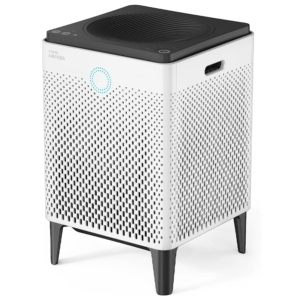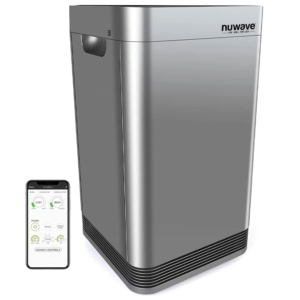Welcome to Vacuum Wars and to our latest installment of Air Purifier Wars. This time we’re comparing the Coway Airmega 400 and NuWave OxyPure air purifiers. Over the period of several weeks, we’ve thoroughly tested both air purifiers. In this article, we’ll review the results and see which one of these premium air purifiers came out on top.
Coway Airmega 400 vs Nuwave OxyPure
The Coway and NuWave air purifiers are priced similarly as they’re both top-of-the-line, premium air purifiers, and both are designed for larger spaces. They both use HEPA filters to capture particulates and carbon filters to eliminate odors, gases, and VOCs. Additionally, they both feature washable pre-filters to catch larger particles, and both have indicator lights to let you know when it’s time to wash or replace their filters.
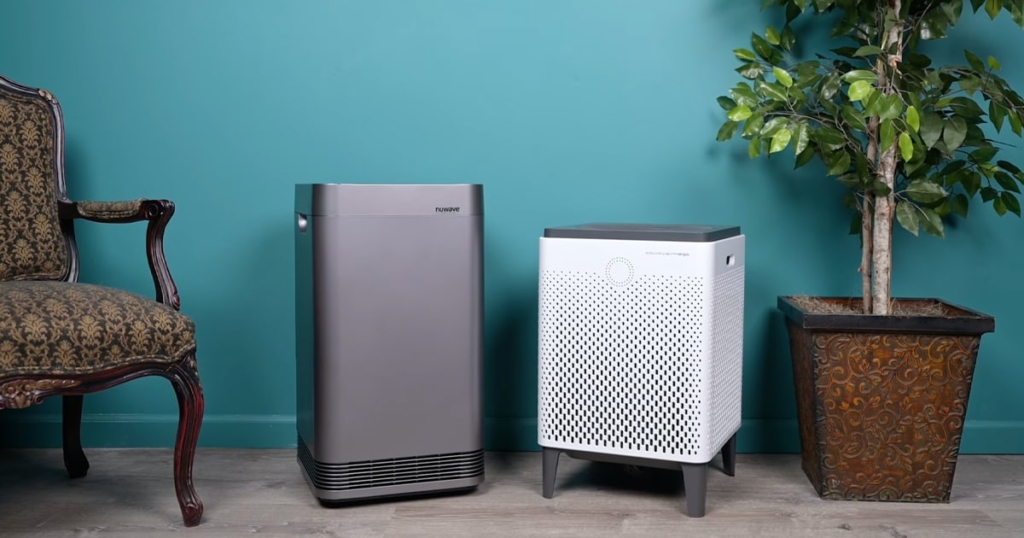
The NuWave OxyPure introduces two unique filtration types: an ozone emission removal filter and a Bioguard filter.
See our comparison of Dyson’s Pure Hot+Cool HP04 vs Alen’s BreatheSmart 75i and our IQAir HealthPro Plus vs Greentech pureAir Active HEPA+ Pro head-to-head review!
Features
Starting with the features category, both the Coway Airmega 400 and NuWave OxyPure are equipped with particle sensors that detect the level of particles in the air. They provide real-time air quality indications through colored lights. The Airmega’s indicator light is located on the side of the unit, easily visible from across the room, while the OxyPure’s light is positioned on top, visible from above.
Thanks to their particle sensors, both air purifiers offer automatic settings. They have Smart Mode, which adjusts the fan speed based on the particulate levels in the air, and Eco mode where the unit automatically turns on if poor air quality is detected. The OxyPure sensors also detect odors, and it displays the level on the LED readout.
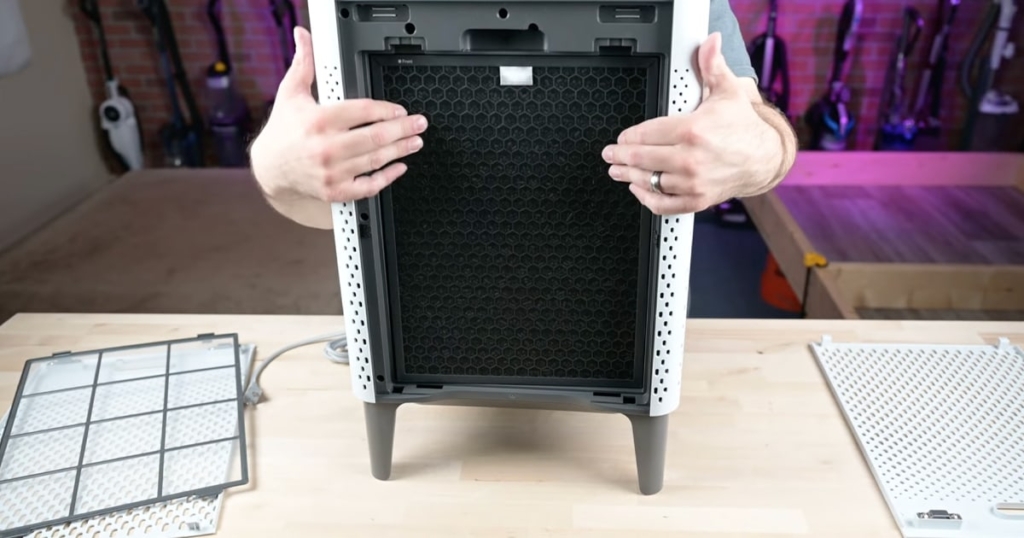
Both units allow manual selection of timers and fan speeds. They also feature night mode settings which operate the fan at a lower and quieter setting. One notable difference is that the OxyPure is Wi-Fi-capable, enabling remote monitoring and control of air quality through the NuWave app.
RELATED: Check out this Air Purifier Wars Coway vs Winix matchup: Coway Airmega AP-1512HH vs Winix 5500-2!
Size is another feature we consider where smaller units are generally preferred. In this case, the Airmega is both shorter and has a smaller overall cubic volume than the OxyPure.
Based on features, the winner in this category is the NuWave OxyPure. However, it was a close call. Its additional settings and Wi-Fi capability gave it the edge.
Filter Quality
Moving on to filter quality, both air purifiers feature HEPA filters with incorporated mesh carbon filters. HEPA filters capture indoor allergens like pollen, pet dander, mold, and bacteria, while carbon filters trap household odors.
The Coway Airmega stands out with its two sets of filters located on both sides of the unit. This gives it nearly twice the filter area compared to the NuWave OxyPure.
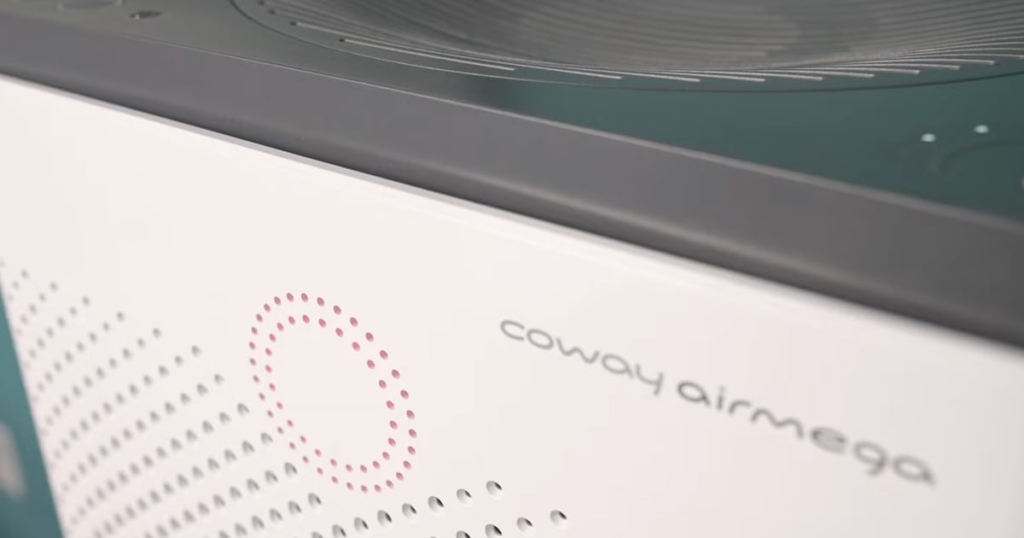
On the other hand, the OxyPure introduces new filtration techniques, like an ozone emissions removal filter, which NuWave claims to be 70 times more effective than EPA requirements and to reduce ozone concentration to .001 parts per million. It is reusable for up to 20 years.
Additionally, the OxyPure features a patented Bioguard filter capable of capturing particles and pollutants as small as 0.09 microns. Its purpose is to trap lead, bacteria, dust mites, mold spores, viruses, pollen, and allergens. This represents the highest level of filtration of any air purifier we’ve tested yet. According to the manufacturers, the Bioguard filter is also washable and reusable for up to 20 years.
Both the OxyPure and Airmega air purifiers require the replacement of their combination HEPA and carbon filters approximately once a year. The OxyPure package we purchased included four HEPA and carbon filters, eliminating filter replacement costs for the first four years, which is a bonus.
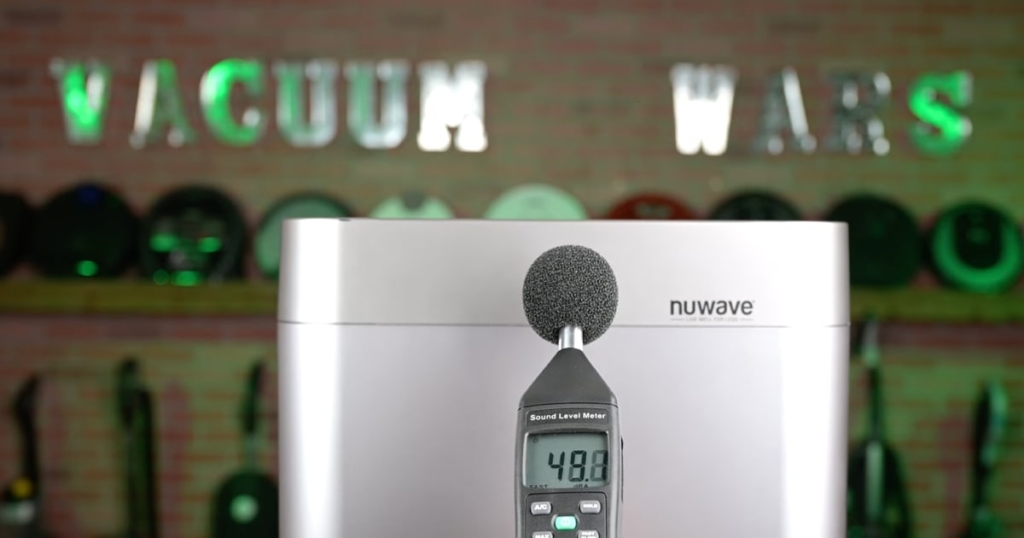
Adding up the points in our filter quality category, the Airmega gained sizable points because it had more than twice the HEPA and carbon filtration than the OxyPure, making the Airmega the winner in this category.
Bench Tests
Now, let’s move on to the bench tests, where we measure factors such as airflow and noise level. In this regard, the NuWave OxyPure showcased noticeably higher airflow than the Coway Airmega when compared at their highest settings. This is probably because the NuWave has almost double the power according to the sticker on the back, which probably means a much bigger fan. But it also is faster because it has less filter media to pull the air through.
The OxyPure also performed better in our real-world noise test. This is where we measure airflow at the noise level closest to 55 DB without going over. The OxyPure had more airflow, measuring 47 CFM, whereas the Airmega measured a bit less at 40 CFM.
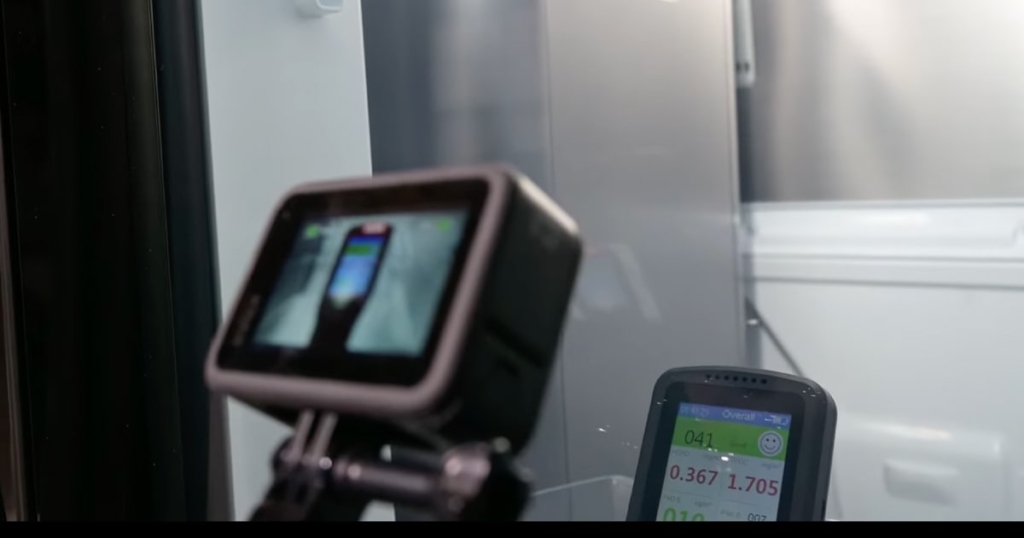
Filtration Tests
Next, we have the filtration test category, where we evaluate particle and VOC filtration. In the fog test, where we release 12 seconds of fog into a ventless room and run the air purifiers on max power, both units performed well, reducing 10 and 2.5 Micron particles to the same low levels. However, the OxyPure achieved a much faster reduction rate of 60 particles per minute compared to the Airmega’s 32 particles per minute.
In fact, the NuWave OxyPure was the second fastest reduction speed we’ve seen in this test at a mere 40 minutes, where the average is almost 30 minutes more, which again is probably due to its powerful motor.
For the reduction of volatile organic compounds (VOCs), we conducted a test by introducing exact amounts of incense smoke into a sealed refrigerator. We measure how much and how quickly the air purifier can reduce VOCs during a five-minute test on max power.
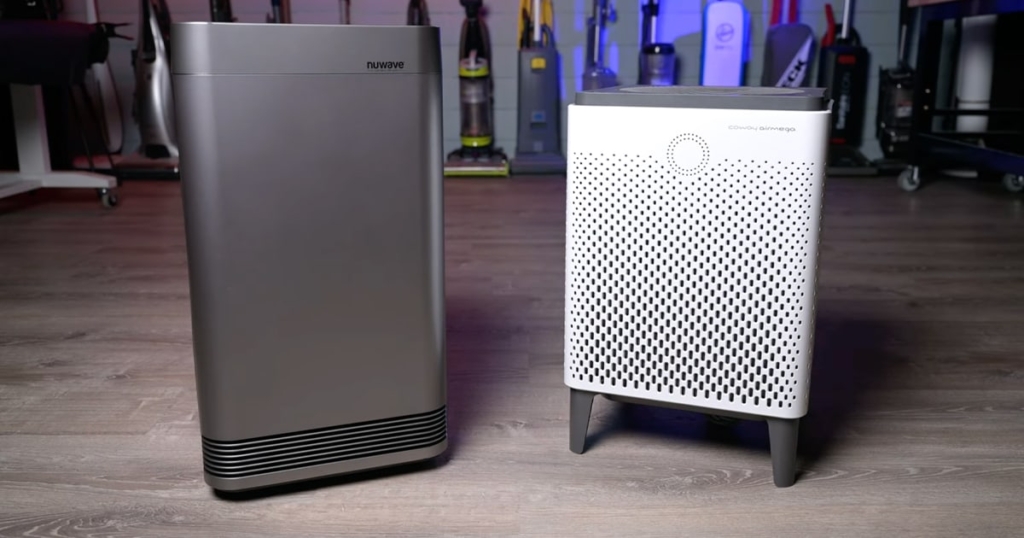
The Coway Airmega successfully reduced VOCs by 100 percent, while the OxyPure only achieved an 86 percent reduction. Both are good, but the Airmega was better. Additionally, in our tests, the Airmega achieved nearly 100 percent in formaldehyde reduction, while the OxyPure achieved about a 22 percent reduction of formaldehyde. So, it seems that the extra carbon filter material on the Coway Airmega hurt its processing speeds a little, but the payoff is that it’s better at reducing smells, gases, and VOCs.
For the filtration test category, the Coway Airmega wins, mostly because of its performance in the VOC test.
Conclusion
Summing up the points from each round, the Coway Airmega secures the final lead in this competition due to its filter quality and better VOC performance. However, the NuWave OxyPure exhibited its strength with super high airflow, amazingly good particle reduction speeds, better interface and features, and a useful app. So, we can say both have strong merits that could easily be a benefit in your home.
